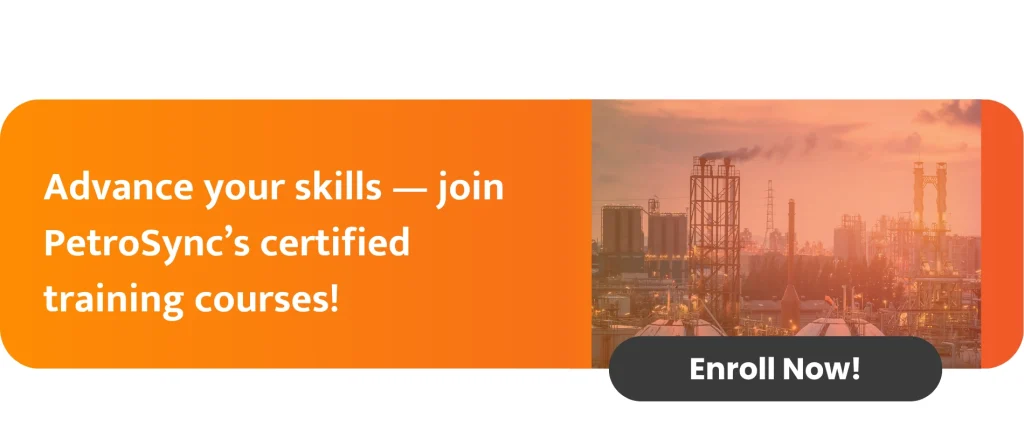In today’s unstable energy landscape, where equipment reliability, operational efficiency, and long-term sustainability define competitive advantage, managing physical assets is no longer just a back-office function – instead, it has become a boardroom priority. For oil and gasoline companies, property is extra than simply pipelines, rigs, and machinery.
Therefore, they are the basis of commercial enterprise value. But here’s the critical question: are your assets truly working for you – or are they quietly draining resources? This is the place Asset Management will become no longer simply applicable however vital.
And if you are searching to optimize your organization’s asset overall performance whilst aligning with strategic objectives, investing in an Asset Management Course should be a game-changer.
What is Asset Management?

Asset Management is a coordinated undertaking by an organization to realise value from its assets. Specifically defined by ISO 55000, it provides a comprehensive framework that seamlessly integrates asset-related decisions with broader business objectives. As a result, companies can effectively optimise the entire lifecycle of their physical assets – from acquisition and operation to maintenance and disposal.
In the oil and fuel industry, asset management plays a crucial role; specifically, it minimizes unplanned downtime, extends asset life, and reduces the total cost of ownership (TCO). Moreover, it represents a fusion of engineering, financial planning, data analytics, and strategic leadership.
According to a McKinsey study, companies that undertake superior asset administration practices can limit upkeep fees with the aid of up to 30% and extend gear uptime by using 20% – immediately impacting profitability and chance exposure.
What is an Asset Management Course?
An Asset Management Course is a structured getting to know software designed to construct the capabilities wished to plan, monitor, and optimize asset overall performance throughout its lifecycle. It empowers experts with worldwide requirements such as ISO 55000 and PAS 55, whilst incorporating realistic techniques tailor-made to real-world industrial challenges.
Whether you’re an engineer or executive, this program helps turn technical insights into practical business results. Key topics include reliability centered maintenance, lifecycle costing, asset risk assessment, as well as digital transformation in asset monitoring.
The course also encourages participants to evaluate their own organizational asset maturity and develop action plans that deliver real impact.
What are the 5 Stages of Asset Management?
Effective asset administration is not a one-off venture; instead, it’s a continuous process. To illustrate, here are the 5 core stages:
1. Asset Strategy and Planning
To begin with, establish long-term plans based on asset criticality, operational goals, and business priorities.
2. Asset Acquisition
Ensure belongings are bought or developed with the proper specifications, overall performance criteria, and future scalability.
3. Asset Operation and Maintenance
In addition, apply preventive, predictive, and condition-based upkeep methods to ensure optimal performance.
4. Asset Performance Evaluation
Use data-driven KPIs like OEE (Overall Equipment Effectiveness), MTBF, and MTTR to screen asset fitness and optimize interventions.
5. Asset Disposal or Renewal
Evaluate the end-of-life selections – whether to refurbish, retire, or change the asset primarily based on cost-benefit analysis.
Consequently, these degrees work in a built-in loop. When done strategically, they now not solely prolong asset existence however additionally limit operational risks. According to the Institute of Asset Management (IAM), adopting a structured asset lifecycle strategy can enhance return on belongings (ROA) by over 10%.
What is the Objective of an Asset Management Course?
This course will objectives as follows:
- Attendees will learn how to develop and implement a strategic asset management plan successfully
- Understand the tools involved in industrial asset management
- To begin with, develop the necessary skills to effectively analyze and determine asset requirements aligned with business goals.
- Understand and learn about the international standard ISO 55000:2014 and its practical implementation
- Integrating Asset Integrity Management tools (RCM, RBI, CMS, MoC, Culture change, RCA, CSMMS, IPF, Action tracking, and KPIs) into the SAMP
What is Covered in an Asset Management Course?
DAY 1
- Introduction
- Definition of assets, asset management, and asset management systems (ISO 55000:2014)
- Tools used in asset management and the relation with asset integrity management
– RCM
– RBI
– CMS
– MoC
– Culture change
– RCA
– CSMMS
– IPF
– Action - Understanding the Strategic asset management plan (SAMP)
- Case Study – Understanding your assets and asset portfolio and determining the risk associated with the operation
DAY 2
- Understanding the use of asset management and asset integrity management tools
– Criticality and Risk
– Risks Associated with Production
– The risk associated with maintenance or lack thereof
– Risks associated with health safety and the environment
– Developing a risk matrix (Probability, Consequence, and Detectability) - Developing a successful strategic asset management plan based on identified risks and needs of individual
– Identifying business goals and aligning activities
– Lifecycle cost
– Maintenance Strategy tools
– Balancing activities, needs, and cost
– Operation demand and maintenance requirements – finding the balance
– People skills and skill management programs - Case Study – Develop a Strategic Asset Management Plan (SAMP) to manage your asset portfolio risk
DAY 3
- Successful implementation of strategic asset management plans
– Task Development
– Detailed task writing
– Developing your CMMS system
– Inspection programs and operator-driven reliability - Pitfalls that should be avoided
– Overdoing it with tasks
– KPIs that make sense
– Balanced score cards
– Updating studies and continuous improvement - Final notes on techniques and technologies
– Tools and techniques to simplify inspection
– Tools and techniques to build a visual inspection program
– Skills matrices and successful implementation and integration - Case study – Implementing your SAMP successfully and following up on your implementation
Who Should Attend the Asset Management Course?
This course is specially designed for the following disciplines:
- Maintenance and Operations Managers
- Engineering Managers
- Maintenance Planning Managers
- Asset Management Professionals
Each attendee must bring a Laptop Computer with Microsoft Operating System and Scientific Calculator
Unlock Your Career Potential: Join PetroSync Training Today
At PetroSync, we recognize that asset administration is more than just a technical process – in fact, it’s a leadership responsibility. Therefore, our training programs are designed not only to educate but also to transform how you manage your assets and teams. In addition, led by global experts, our Asset Management Course offers practical strategies and certification to optimize cost, risk, and performance.

Results-oriented and thorough SEO specialist with extensive experience in conducting keyword research, developing and implementing digital website promotion strategies and plans, managing campaigns to develop company websites in the digital world, excellent knowledge of marketing techniques and principles, and attentive strong attention to detail.







